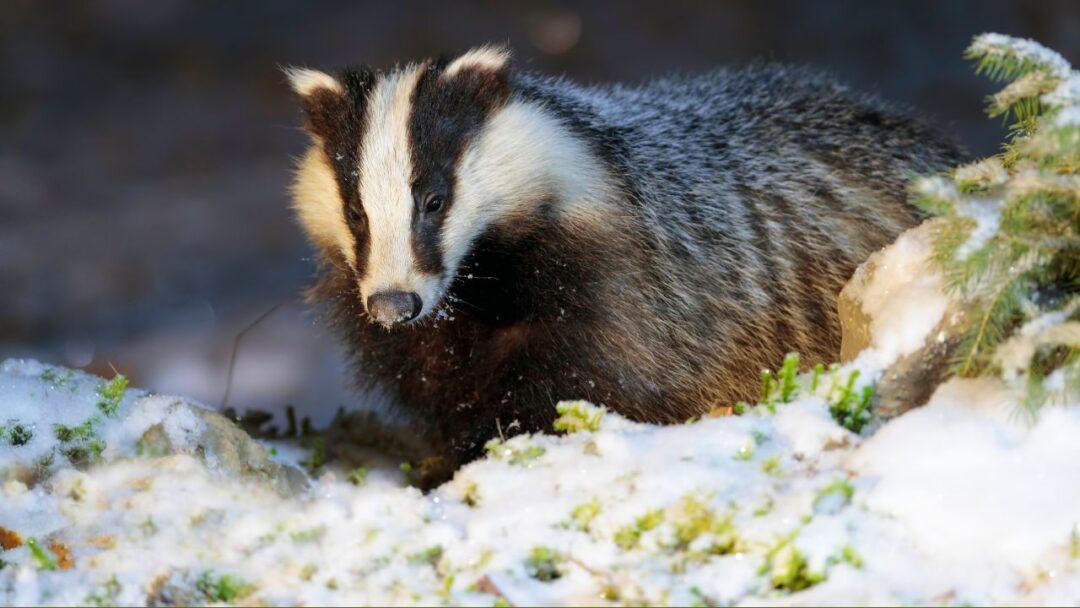Table of Contents

Introduction
Prepare to enter the enthralling world of badgers, where adventure awaits at every turn. This essay will reveal ten previously unknown and astonishing facts about these fascinating critters. We’ll debunk misunderstandings about badgers and their crucial role in the ecosystem, from their various species to their strange behaviors. Prepare for an enthralling excursion into the secret life of badgers.
10 Untold or Unbelievable Facts about Badgers
- Honey Badger – Fearless and Ferocious: The honey badger, also known as the “ratel,” is renowned for its indomitable spirit. This species fearlessly confronts animals much larger than itself, such as lions and hyenas, earning a reputation as one of the world’s fiercest creatures.
- American Badger – Tunneling Masters: American badgers possess remarkable digging abilities. They can excavate complex underground burrows with multiple chambers, creating a safe haven for themselves and their young.
- Eurasian Badger – Social Creatures: Eurasian badgers are highly social animals that live in extensive underground networks called “setts.” These setts can be occupied by multiple generations of badgers, fostering a tight-knit community.
- Hog Badger – Snout for Survival: The hog badger, with its elongated snout, is uniquely adapted for foraging. Its specialized nose allows it to root through soil and leaf litter in search of food, including insects, worms, and small vertebrates.
- Japanese Badger – Artistic Connections: In Japanese folklore, the badger is associated with shape-shifting and magical abilities. These mythical connections have inspired many tales and artworks throughout Japanese history.
- Badger Hierarchy – Alpha Female Dominance: Within badger social groups, the alpha female holds the highest rank and dictates the group’s activities. She plays a crucial role in ensuring the well-being and cohesion of the community.
- Badger Communication – Scent and Sounds: Badgers employ a variety of communication methods. They mark their territories with scent glands and use distinct vocalizations, such as growls, hisses, and purrs, to convey messages to other badgers.
- Nocturnal Noises – Badger Babble: During their nocturnal forays, badgers emit a range of peculiar sounds, including churring, snarling, and chittering. These vocalizations may serve as social signals or warnings to other animals.
- Badger Myths – Guardians and Shape-Shifters: Badgers have a rich mythology surrounding them. In various cultures, they are believed to possess protective powers or the ability to transform into other creatures.
- Badgers and Agriculture – Pest Controllers: Badgers play an essential role in controlling populations of rodents, insects, and other agricultural pests. Their foraging habits contribute to a balanced ecosystem, benefiting both farmers and wildlife.
Mysterious Facts and Myths
Badgers have been linked to tales and folklore throughout history. Here are a number of interesting facts and beliefs about badgers:
- In certain Native American stories, badgers are seen to be guides to the spirit realm, possessing wisdom and foresight.
- Badgers are associated with endurance and healing in European mythology, and are frequently shown as emblems of tenacity and recuperation.
Importance to Ecosystem
Badgers serve a crucial ecological role. They aerate the soil by digging, allowing nutrients to flow and plants to thrive. Furthermore, their role as predators helps to regulate tiny animal and insect populations, so maintaining ecological balance.
What do badgers eat?
Badgers eat a wide variety of small mammals, including rodents, rabbits, and ground-nesting birds. They also eat insects, worms, fruits, berries, and, on rare occasions, carrion.
Where do badgers live?
Badgers live in a variety of habitats, including forests, grasslands, and scrublands. They frequently excavate setts, which serve as their dwellings. These setts are seen in open fields, hedgerows, and even cities.
How big do badgers get?
Badgers are normally 2 to 3 feet long, with a tail that is 6 to 10 inches long. They typically weigh between 15 and 30 pounds, with males being larger and heavier than females.
Are badgers aggressive towards humans?
Badgers are generally shy and evasive creatures who prefer not to interact with humans. They are usually not violent towards humans unless they are threatened or cornered. It is advisable to view them from afar and avoid disturbing their natural surroundings.
Do badgers hibernate?
Badgers do not hibernate, however they may go into torpor throughout the winter. They lower their activity levels, preserve energy, and rely on their body fat reserves during this time.
Are badgers protected by law?
Yes, badgers are legally protected in many nations, including the United Kingdom. Killing, trapping, or disturbing badgers or their dens without the proper permissions or licenses is prohibited and can result in serious fines.
How long do badgers live?
In the wild, badgers have a lifespan of 4 to 8 years, though some have been reported to live up to 14 years. Food availability, predation, and infections can all have an impact on their longevity.
Do badgers live in groups?
Yes, badgers are gregarious creatures that live in clans. A typical clan is made up of numerous individuals and their children. They have sophisticated social systems and participate in cooperative behaviors including collective grooming and communal child care.
Can badgers swim?
Yes, badgers are good swimmers. They can paddle and float in water, but they prefer to stay on land. Individuals’ swimming abilities differ, but they can cross bodies of water if necessary.
How do badgers defend themselves?
Badgers use their formidable claws and ferocious bite to defend themselves when they are threatened. As a warning, they may hiss, growl, or produce a powerful odor from their smell glands. When agitated, they can turn aggressive and deliver a series of bites in rapid succession.
Conclusion
Dive into the fascinating world of badgers to discover their amazing diversity, unusual behavior, and enduring myths. Whether it’s the brave honey badger, the intricate social structure of Eurasian badgers, or their critical ecological advantages, badgers continue to captivate us. These incredible species serve as a reminder of nature’s unique tapestry and the importance of preserving their habitats for future generations.
10 Fascinating Facts About Beavers : NEXT POST